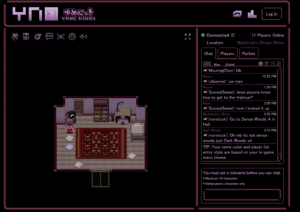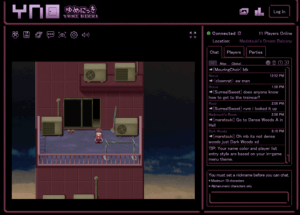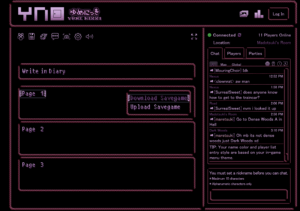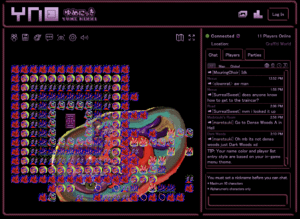This past week I played Yume Nikki! Unlike any other game I’ve played, Yume Nikki offers extremely limited sensory interactions beyond the sense of sight. Founded by Kikiyama, a secretive Japanese game developer, “Yume Nikki” is a 2004 adventure game that is primarily based on exploration, with minimal plot, narrative, dialogue, or competition. It was first hosted on the web platform, 2channel, an anonymous Japanese textboard (namely, a type of online Internet forum where interactions and gameplay can occur). Given the digital branding of the game and similarities to early digital versions of Nintendo’s Pokemon (namely, from a graphics and gameplay design that is centered around walking), the target audience of this game may have been younger players aged 6-18 who explored more exploratory, discovery-based open-ended gameplay.
Within the game itself, there is no “end game” or “win condition” within the game – it is purely an experiential concept that plays on users’ own psychedelic-like and trance-like fluid state. A game that can be played for hours on end. In the game, a player can move the main character through her home, and explore different doors and interactions (i.e., turning on the TV, writing in a diary, opening doors, unlocking effects that transform the character-state, and walk). Such simple interactions are primarily driven by visual cues and artwork in the background – nearly simulating the fluidity, uncertainty, unpredictability of a dream–state. In fact, “Yume Nikki” is a Japanese phrase for “Dream Diary.”
In this game, walking can tell a nuanced, cohesive story because rather than treating walking as a means to reach an objective, walking in this instance of gameplay represents a medium that serves as a message for the audience. More specifically, the action of walking affords multiple diverse interactions and discoveries – unlocking certain doors, exploring specific avenues, discovering new actions – that writes the unique story for players. No two narratives crafted by players will be exactly the same. In other words, the act of walking is a form of unique expression in itself as a player creates their own action-based personal narrative and interpretation of their dreamworld. The real-time manifestation of one’s curiosity and imagination as the wanderer, as reflected by the balanced depth and breadth of their gameplay (i.e., which doors I chose to open, which worlds I chose to further explore, parallel explorations in my own gameplay, etc), is the story here.
The primary mechanic of walking, coupled with the immense randomness and mystery behind interactions one can take in the environment, make for a version of fun that is explorative and defined by open-ended creativity. Coupled with the psychedelic aesthetics and dream-state narrative, the gameplay is quite addicting for users who love the thrill of discovery. To improve the gameplay, developers ought to identify gameplay moments where a certain player may be taking a brute-force approach towards discovery. For example, when playing the game, there were moments where I would spam the “Enter” button at random times to simply uncover a discovery. Such moments, when built up, tend to lead to rage quit moments or frustration over the open-ended nature of the game. To combat this, I would suggest penalizing such actions, and redirecting the player in the right direction via gameplay clues for discovery.
Example of Home Base:


Example of Opening Diary Interaction in Home:

Example of “Clue” or Global Map of a World:

Example of World:

Example of Breadth of Doors into Worlds:




